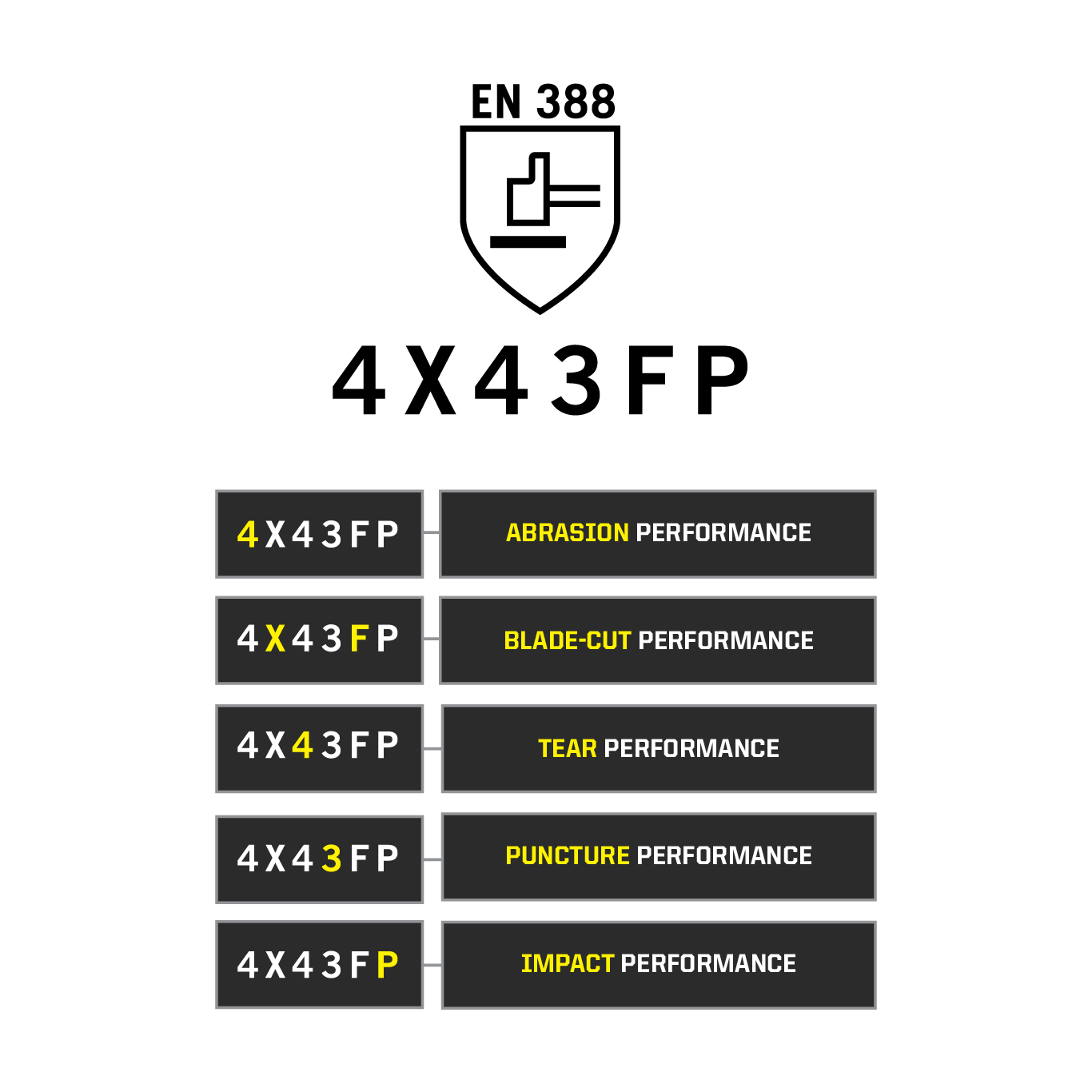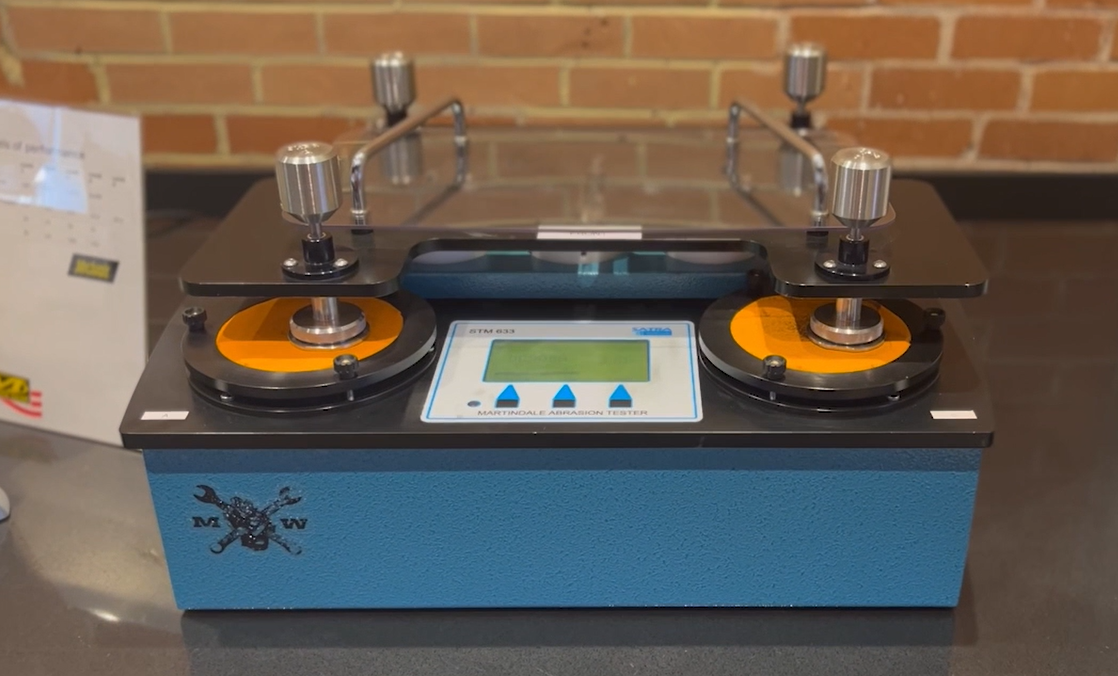CE glove ratings explained
The CE mark is an official seal of approval to sell products within the European Union. In order to get this approval, PPE manufacturers must correctly classify product features and performance ratings to meet industry-defined standards.
CE standard EN 388:2016 is particularly relevant to work gloves used in industrial applications. EN 388:2016 measures a glove’s ability to protect the hand against mechanical risks such as abrasions, lacerations, tearing, punctures, and impact injuries.

Every CE-certified glove is marked with a 4 or 6-character label.
Each glove is tested against one of the above hazards and given a rating based on how they perform. This label allows safety professionals and workers alike to evaluate whether the gloves they own or want to buy are suitable for the task or environment at hand.
But, as you can see, it’s not as simple as giving them a score of 1-10. Each test uses different equipment and processes, and therefore scores things differently, too.
Below, we explain the major tests that make up a CE standard EN388 rating so you can understand how those scores are generated.
The abrasion test

The abrasion test determines how well a glove can protect against scrapes from rough, abrasive surfaces. Tests are performed on a Martindale machine (pictured).
The sample material is fitted onto weighted rubbing heads that are positioned over a table covered with 180-grit sandpaper. The rubbing heads then move in an elliptical motion under controlled pressure. The test proceeds until the material is broken, and the number of cycles is recorded.
Abrasion tests are rated from 1 to 4, with 4 being the highest.
Cut performance tests
The EN 388:2016 standard also rates gloves based on their ability to withstand cuts from sharp objects. There are currently two methods used to measure this rating: one is the Coupe Test, and the other is the TDM test.
The Coupe Test
The Coupe Test involves a sharp circular blade that cycles back and forth over the glove under controlled pressure. The cuts repeat until the blade finally breaks the material. Ratings are determined based on the number of cycles it takes to damage the sample.
Ratings range from 1 to 3, with 3 being the highest.
Materials that test beyond level 3 receive an “X” rating, but can also mean that the Coupe test generated false results. There have been known issues with testing high-cut composite/aramid fiber material and metal blends where the sample actually dulls the blade. This invalidates the test and requires a TDM test instead.
It should be noted that older products have Coupe Test ratings up to 5. This is before the standards were modified to include the TDM test.
The TDM Test

The TDM test involves using a Tomodynamometer (TDM) machine to cut the test material. Instead of using a circular blade like the Coupe test, however, the TDM machine uses a straight blade to cut through the material.
The amount of force and cut length are measured and plotted to form a trend, and applied to the test material five times to determine tolerance levels. TDM test blades are only used once per stroke, so dulling the blade isn’t an issue like it is with the Coupe test.
Ratings for the TDM test go from A to F, with F being the highest. A rating of “X” is used if the Coupe test is successful and no TDM test has been run.
Tear resistance
Gloves are rated for tear resistance using a machine called a tensometer. In this test, a sample is pulled apart at a controlled speed. The materials gets a rating based on how much force is needed to tear it apart.
Ratings for the tear resistance test go from 1 to 4, with 4 being the highest.
Puncture test
Workers in various industries can be at risk to sharp objects like needles or spikes, so it’s necessary to have gloves that can stand up to punctures. In a puncture test, a rounded-tip probe similar to a stylus is pushed 50mm into the material at a constant speed of 100mm/min using a compression test machine.
The material is rated based on how much force is needed to punch through the fabric.The test is run a total of four times, and the lowest score is used for the rating.
Ratings go from 1 to 4, with 4 being the highest.
Impact test
“Impact attenuation” is a material’s ability to reduce peak impact energy. The impact rating is determined by running a series of impact tests at multiple strike points on the glove and totaling the sum divided by the number of strike points.
If the average transmitted force is less than or equal to 7kN, then the glove is able to significantly reduce impact to the wearer and receives a Level 1 Pass or “P” rating for impact attenuation. If the average impact rating is higher than 9kN, then the glove does not absorb impacts as well and it receives a Level 0 FAIL rating or “F”.